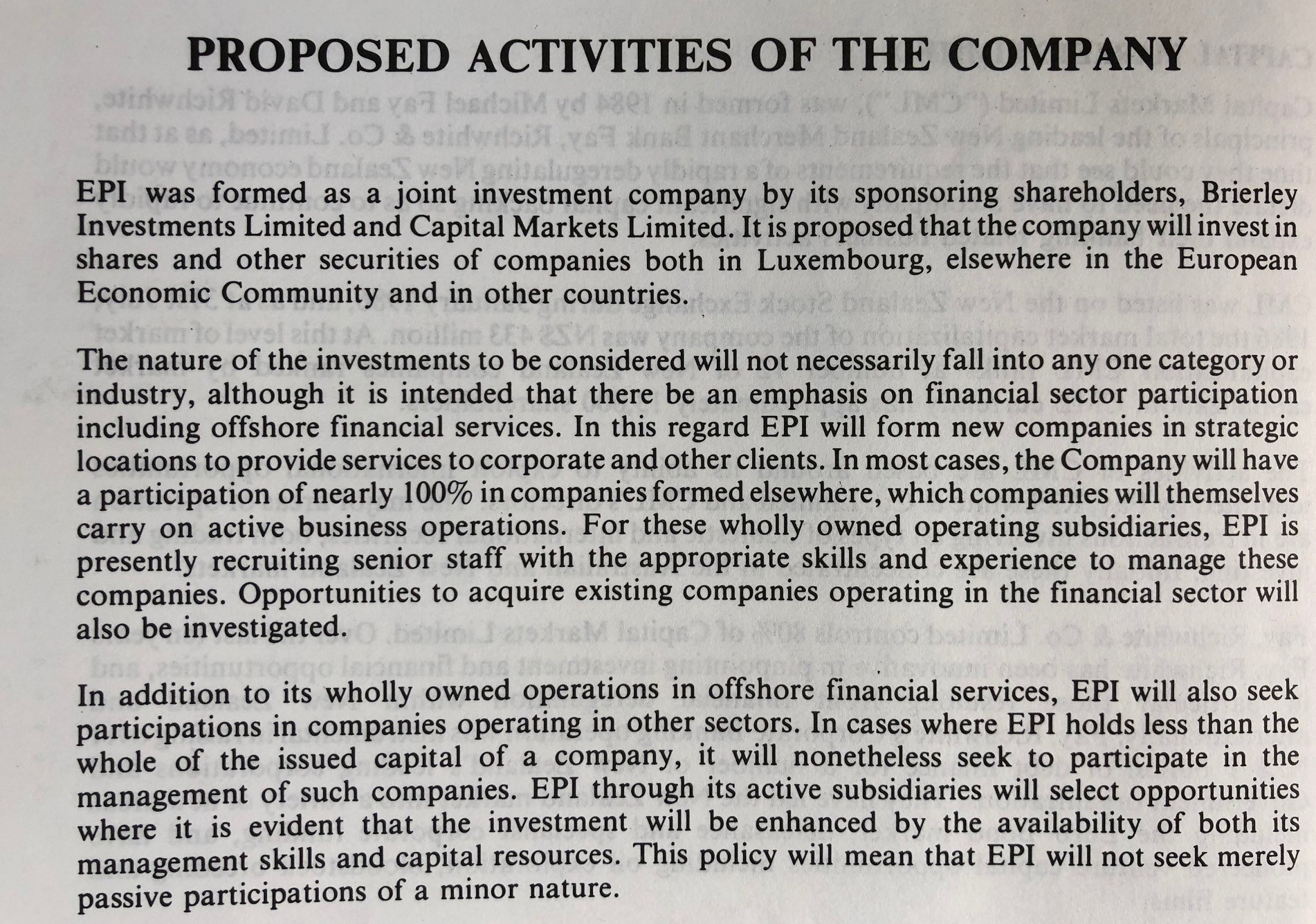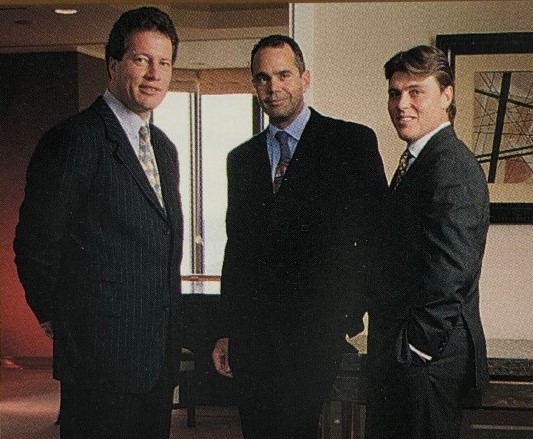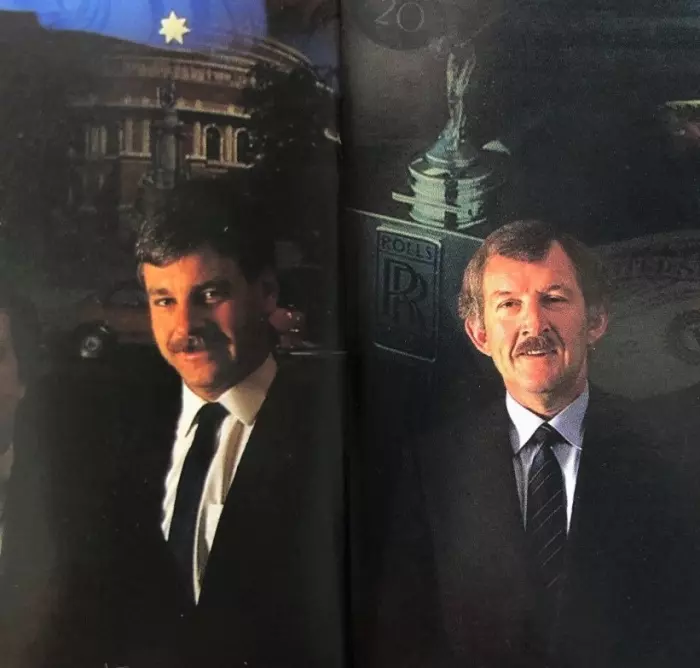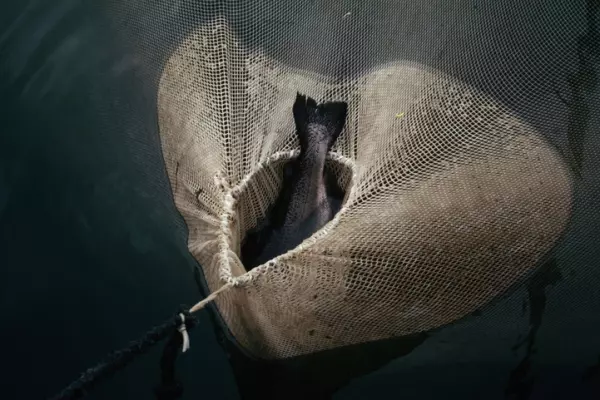On Aug 29, 1990, Capital Markets shareholders approved the controversial takeover of Fay, Richwhite & Co for $225 million, comprising $42.5m of net assets and $182.5m of goodwill.
The purchase price, which was exceptionally high in the post-1987-crash era, could only be justified if Fay, Richwhite & Co continued to achieve strong profit growth.
Capital Markets chairman Laurie Stevens strongly supported the acquisition and told shareholders he was “more than satisfied with the deal based on the quality of earnings of the merchant bank, incorporating Fay, Richwhite and the track record of the banking world champions Michael Fay and David Richwhite”.
Although we didn’t know it at the time, Fay, Richwhite’s earnings were highly dependent on European Pacific Investments, which later featured strongly in the Winebox Inquiry into tax dodges.
European Pacific Investments
European Pacific Investments (EPI), which was the brainchild of David Richwhite and Brierley Investments’ CEO, Paul Collins, was incorporated in Luxembourg on Sept 24, 1986, with 25,000 shares.
Its share capital and shareholdings then evolved as follows:
- Just over two months after incorporation, on Dec 4, EPI’s share capital was increased to 25m shares through the issue of new shares at US$2 ($3.85).
- The company now had 25m shares on issue, with Capital Markets and Brierley Investments (BIL) holding 12.5m shares each.
- Shortly after Dec 4, Capital Markets and BIL sold 3.5m shares each to the BNZ at $8.85 a share.
- The two original shareholders then sold an additional 2m shares each to the New Zealand public at $11.85 a share through an IPO.
Following these transactions, EPI listed on the NZX in early Jan 1987, with Capital Markets, BIL and the BNZ holding 7m shares, or 28% each, and the New Zealand public 4m shares, or 16%.
Capital Markets and BIL had identified two gullible investors – the BNZ and the New Zealand public – which enabled both of them to make a profit of $33.5m on their EPI holdings in less than a month.
Shortly after these transactions, Peter Travers – who was in charge of the BNZ’s corporate banking division, which had suffered heavy losses in New Zealand and Australia – joined the EPI board.
There was no New Zealand IPO prospectus, although a vague corporate profile released at the time contained the following statement: “EPI has recognised the demand for the provision of, through one specialist organisation, an international network combining trustee and banking services” and “to date, activities have been based in the Cook Islands”.
EPI owned 100% of Cook Islands Trust Corporation and European Pacific Banking Corporation, Cook Islands.
Rapid advances in banking technology and the abolition of foreign exchange controls by finance minister Roger Douglas in 1984 had created the opportunity for complex international tax transactions, and the Cook Islands became a major destination for these deals.
At the individual level New Zealanders could borrow money at home, with the interest costs tax deductible, and then transfer the money from New Zealand through numerous tax havens, including the Cook Islands, and then back to New Zealand under a foreign entity.
This money was then invested in New Zealand under the foreign name, with minimal New Zealand tax payable because of the foreign ownership structure.
This strategy was particularly attractive in 1986 and 1987 when New Zealand interest rates were 20% and higher and when interest costs were tax deductible and minimal tax was deducted on interest paid to foreign entities.
Large corporate tax deals were far more complex, as demonstrated by the Magnum transaction in the Winebox Inquiry, but similar principles prevailed.
EPI, with its major activities based in the Cook Islands, was a tax-dodge company that played a major role in these complex international tax transactions, which peaked between mid-1984 and April 1988.
 An excerpt from the EPI 1986 prospectus.
An excerpt from the EPI 1986 prospectus.NZX listing
EPI listed on the NZX on Jan 6, 1987, as an overseas company and quickly became the hot stock of the new year. Seven days after listing, it reached an all-time high of $40, compared with its $11.85 IPO price, and it was one of the 10 largest NZX companies by market value.
However, none of the major shareholders were in a hurry to associate themselves with EPI, even though it was major market success.
BNZ’s Feb 1987 IPO prospectus had a one-line reference to EPI and contained no details of the cost of this investment, which was $62 million.
Brierley Investments made no reference to the Cook Islands-based company in its 1987 annual report even though EPI made a material contribution to its earnings through the sale of shares to BNZ and the New Zealand public.
Capital Markets gave a little more coverage to EPI, with David Richwhite noting: “As New Zealand-based companies continue to move more towards international operations, utilisation of offshore operations will increase, opening up further opportunities for European Pacific.”
However, this optimism was short lived, as the New Zealand government was taking steps to close the tax loopholes that had benefited EPI, its clients and shareholders.
New laws governing the control of foreign companies owned by New Zealand residents were introduced in early 1988 and EPI sold a 51% interest in its Cook Islands trust and banking operations to David Lloyd, EPI’s managing director.
These tax changes and other changes that followed had a negative impact on EPI’s profitability and share price. In Oct 1989, a company associated with Lloyd acquired the Capital Markets, BNZ and public shareholding for US$2.55 ($4.25) a share and EPI delisted from the NZX on Nov 20, 1989.
EPI public shareholders lost $30m from the company’s short stay on the NZX and the BNZ lost $32m. By contrast, Capital Markets made a profit of $36m.
Fay, Richwhite profitability
As the Winebox Inquiry unfolded in the mid-1990s, it became increasingly clear that the Fay, Richwhite group of companies had been heavily dependent on tax-driven deals, particularly through the Cook Islands.
These deals were structured in a way that income would continue to flow to Fay, Richwhite for a number of years after these complex tax structures had been established and tax loopholes closed.
The purchase of Fay, Richwhite by Capital Markets in 1990, and the profit forecasts contained in the takeover documents, highlighted this issue.
The following graph shows the combined banking profits of Capital Markets and Fay, Richwhite from 1987 to 1990 and the forecasts for the new merged company, and the actual outcomes, from 1991 to 1994.
These banking profits, which are before interest on acquisition borrowing, goodwill, tax and dividends from associate companies, declined dramatically after the 1990 Capital Markets/Fay, Richwhite merger both in absolute terms and compared to forecasts issued at the time of the 1990 merger.
Fay, Richwhite & Co was presented to Capital Markets shareholders as a growing and prosperous business in 1990, yet it is clear from these figures that its earnings had already peaked, and it was in long-term decline.
Stevens, Capital Markets’ chairman, made wildly exaggerated claims when he referred to Michael Fay and David Richwhite as “banking world champions”.
 Fay, Richwhite's Mark Dunphy, Guy Williams and Bill Birnie.
Fay, Richwhite's Mark Dunphy, Guy Williams and Bill Birnie.End of 1990
As 1990 came to an end, the listed company had changed its name from Capital Markets to Fay, Richwhite and two new directors, Bill Birnie and Guy Williams, had been appointed to the board, which now consisted of Stevens (chairman), Fay, Richwhite, Robin Congreve, Geoff Ricketts, Birnie and Williams.
Fay, Richwhite was loaded with debt, its traditional earnings were declining, and it remained a major shareholder in the BNZ, which was facing yet another crisis.
Postscript
On Aug 29, 1990, the day Capital Markets approved the acquisition of Fay, Richwhite & Co for $225m, Capital Markets had a market value of $150m – a combined value of $375m.
In 1995, Eltham Holdings, which was 78% owned by Michael Fay and David Richwhite, made a successful bid for Fay, Richwhite & Co and the company delisted on June 16 that year.
The Eltham offer valued Fay, Richwhite & Co at $255m, well below the $375m value five years earlier, even though the listed company had acquired 29.4% of Tranz Rail from the crown at a favourable price in the interim period.
Looking back: David Lange, Roger Douglas, Ron Brierley and the BNZ
Looking back: BNZ Part 2: Rob Campbell, Frank Pearson and the bank
Looking back: BNZ Part 3: Lindsay Pyne, Michael Fay and the bank
Looking back: BNZ Part 4: Capital Markets, Fay, Richwhite and the bank
Disclosure of interests: Brian Gaynor is a non-executive director of Content Limited, the publisher of BusinessDesk, and of Milford Asset Management.
[email protected]














